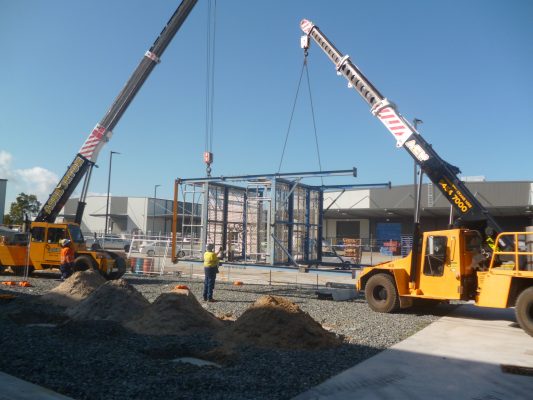
There is a strong demand for licensed Riggers all over Australia, particularly in Western Australia which accounts for 25.2% of all Riggers in the nation (Source: Job Outlook). If you are looking to upskill and boost your career prospects, a Rigging training course might be the answer. In this blog post, we give you the run down on everything you need to know about Rigging to help you get started on this journey.
What is Rigging?
Rigging work involves the use of mechanical load shifting equipment and associated gear to move, place or secure a load including plant, equipment or members of a structure to ensure the stability of those members. It also includes the setting up or dismantling of cranes or hoists.
What are the Different Classes of Rigging?
There are three classes of Rigging licenses in Australia, each with its own description of the type of rigging work that can be performed:
| High Risk Work License – Classes of Rigging License | |
| Dogging | |
| Basic Rigging | RB |
| Intermediate Rigging | RI |
| Advanced Rigging | RA |
BASIC RIGGING
A Basic Rigging license encompass the requirements for a Dogging license. To apply for a Basic Rigging license, you must hold a Dogging license or be enrolled in a Combined Dogging and Basic Rigging training course.
The scope of work for Basic Rigging includes:
- Dogging work
- Structural steel erection
- Particular hoists
- Placement of pre-cast concrete members of a structure
- Safety nets and static lines
- Mast climbers
- Perimeter safety screens and shutters
- Cantilevered crane loading platforms
INTERMEDIATE RIGGING
To engage in intermediate rigging work, you need to have an Intermediate Rigging license. To apply for an Intermediate Rigging license, you must hold or have previously passed assessment for a Dogging license and Basic Rigging license.
The scope of work for Intermediate Rigging includes:
- Rigging work in the class Basic Rigging
- All hoists
- Rigging of cranes, conveyors, dredges and excavators
- Tilt-slabs
- Demolition of structures or plant
- Dual lifts
ADVANCED RIGGING
To perform Advanced Rigging work, you need to have an Advanced Rigging license. To apply for an Advanced Rigging license, you must hold or have previously passed assessment for a Dogging license, Basic Rigging license or an intermediate Rigging license.
The scope of work for Advanced Rigging includes:
- Rigging work in the class Intermediate Rigging
- Rigging of gin poles and shear legs
- Flying foxes and cableways
- Guyed derricks and structures
- Suspended scaffolds and fabricated hung scaffolds
Why You Should Do a Rigging Course
Rigging is classified as a high risk activity that requires anyone intending to carry out rigging work to possess a High Risk Work License (HWRL). At Nara Training & Assessing, we deliver Basic Rigging training and Dogging training. However, we strongly recommend you to enroll in our Combined Dogging and Basic Rigging training course instead to boost your career prospects by being eligible to perform both Dogging and Basic Rigging work. For more information, read our blog post Difference Between Dogging and Rigging or give us a call on 9722 4260.
